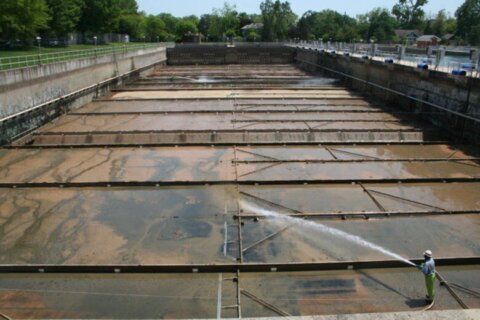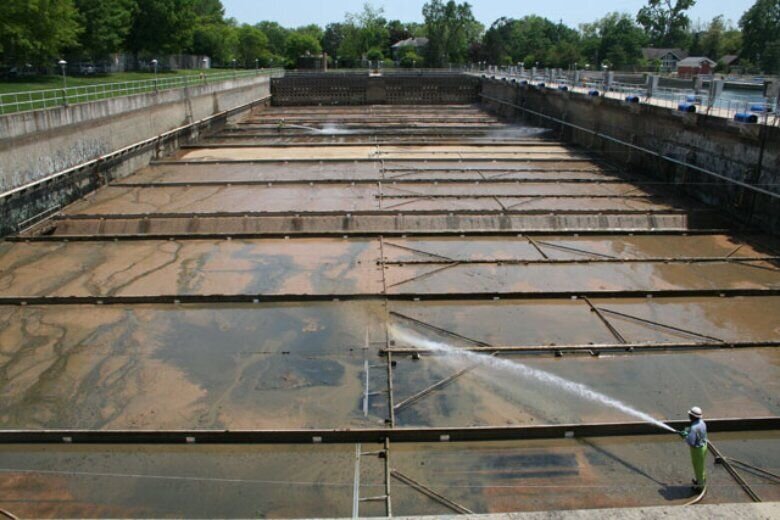
The District and its Virginia and Maryland suburbs are dependent on the Potomac River as the main — or sole — source of drinking water, with only a one-or-two-day supply of drinking water if the Potomac became contaminated, or otherwise unavailable.
The U.S. Army Corps of Engineers is set to begin a three-year feasibility study of ways to bolster the resilience of the area’s water supply.
“We’re going to be open-minded, and look at a range of options, and short term and long term solutions,” Amy Guise, chief of the planning division for the Baltimore District Army Corps of Engineers, told WTOP.
The Washington Aqueduct, operated by the Army Corps of Engineers, processes drinking water for the District and Arlington County and the City of Falls Church in Virginia.
The aqueduct is one of the few major metropolitan water-processing facilities with only one source.
WSSC Water, which serves most of Montgomery and Prince George’s counties in Maryland, draws 30% of the water it sends to customers from the Patuxent River. Fairfax Water, which serves Fairfax and Prince William counties, gets a portion of its water from the Occoquan Reservoir. Loudoun Water’s backup supply is the Goose Creek Reservoir.
In its three-year, $3 million cost-shared study with the Metropolitan Washington Council of Governments, Guise said the Corps will look for short-term and long-term solutions.
“Are there other sources, are there ways to provide interconnections (with other water companies), are there ways to reuse water? All of that is our starting point,” said Guise.
As WTOP first reported in 2016, local water officials have been studying the possibility of utilizing the Travilah Quarry — which is located on Piney Meetinghouse Road in Rockville, Maryland — to provide water storage. Other options include underground water storage.
“We will go through the process of whittling those down with our partners, to those that seem most implementable, and then we would look at the costs and benefits of each of those alternatives,” said Guise.
Rudy Chow, general manager of the Washington Aqueduct, said the findings, “Could be long term or short term, could be a series of recommendations that would solidify additional supply, or additional strategies that would maintain the water supply for the region, as a whole.”
Guise said the three-year study will result in recommendations in a report to Congress. Before any construction projects could begin, lawmakers would need to authorize — and eventually fund — the Corps to implement the project.
The report will evaluate how the project would affect the region, said Guise.
“Whether there are environmental impacts, impacts to cultural resources. We’ll look at socioeconomic impacts, and so our responsibility would be to avoid, minimize, or mitigate (those impacts),” Guise explained.
The challenge of building resilience into the drinking water supply of the nation’s capital is financially daunting, jurisdictionally demanding and time-consuming.
“There is a large body of stakeholders that are supporting, and very much a part of this study, from the other water utilities, to the Interstate Commission on the Potomac River Basin,” said Guise. “There may be solutions that others could begin to implement sooner than a five-or-seven-year-process that would be down the road to get to design and implementation.”
D.C. Del. Eleanor Holmes Norton included the search for secondary water sources in the Water Resources Development Act, which was signed by President Joe Biden.
Get breaking news and daily headlines delivered to your email inbox by signing up here.
© 2024 WTOP. All Rights Reserved. This website is not intended for users located within the European Economic Area.









